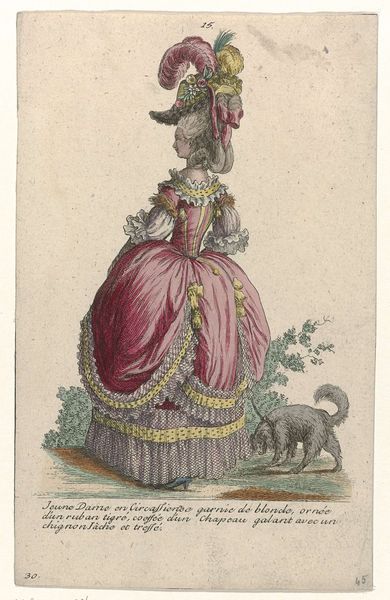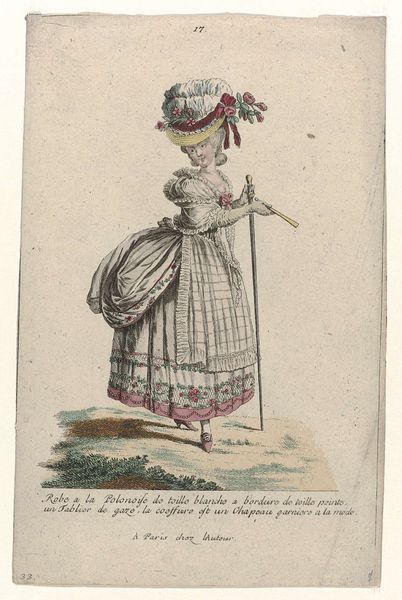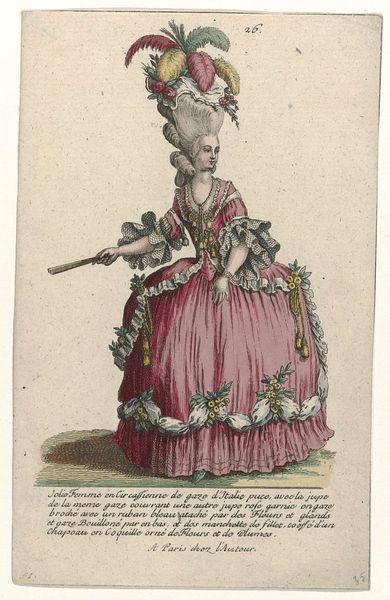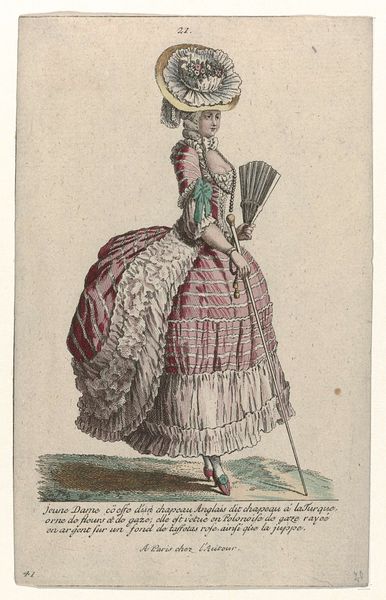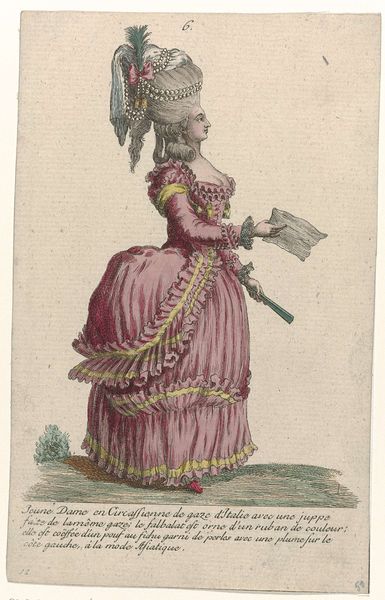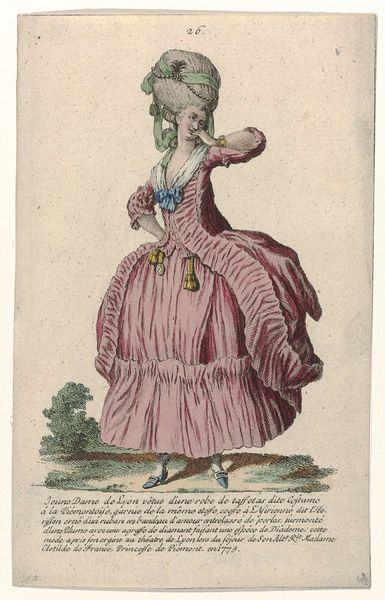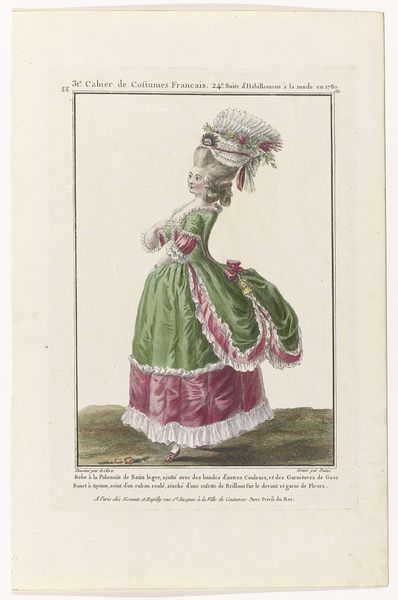
Gallerie des Modes et Costumes Français, 1785, nr. 2, nr. 3, Kopie naar gg 181 : Robe à la Polonoise de Satin (...) c. 1785
0:00
0:00
Dimensions: height 178 mm, width 111 mm
Copyright: Rijks Museum: Open Domain
Editor: Here we have a print from around 1785 titled "Gallerie des Modes et Costumes Fran\u00e7ais," featuring a woman in a magnificent Rococo dress. The piece is made using etching, drawing, and watercolour. What strikes me first is the contrast between the rigid conical shape of the dress and the soft, almost playful ruffles. What do you see in this work? Curator: The most compelling element of this composition is the interplay of line and form. Consider how the artist uses delicate etching to define the intricate details of the dress. Notice how these linear patterns both create and disrupt the illusion of three-dimensionality. What sort of tension do you feel that this effect creates? Editor: I see what you mean, it almost flattens the image despite the attempts at shading. The ruffles seem to jump forward, while the dress itself appears somewhat two-dimensional. It's like a push and pull between flatness and depth. Curator: Precisely! The colour palette, too, reinforces this dynamic. Observe the strategic deployment of colour. What strikes you about their application? Editor: The contrasting hues of rose and green are quite striking, aren’t they? But also somewhat disharmonious and strangely arbitrary. It seems the choice of colours highlights the various components of the costume, further accentuating their individual shapes, rather than unifying them into a coherent whole. Curator: An astute observation! These prints served less as faithful representations and more as diagrams, meticulously outlining the distinct elements of high fashion. Editor: That's a fascinating insight. So, the artistic choices emphasize form and structure over a holistic aesthetic? I see it now, focusing on the details that define "fashion," but also create some tension for the eye. Thanks for the detailed view. Curator: Indeed. It reveals how art, even seemingly decorative art like fashion plates, can be decoded through careful analysis of its constituent parts, illuminating deeper conceptual frameworks. A closer look will make this evident.
Comments
No comments
Be the first to comment and join the conversation on the ultimate creative platform.



